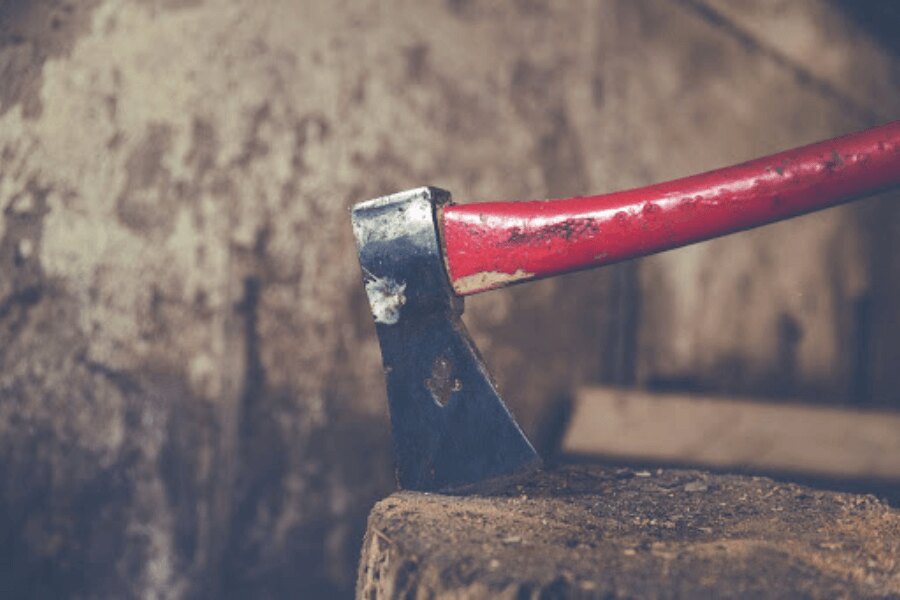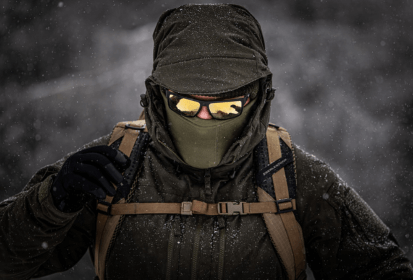10 facts you might not know about axes
The axe (or hatchet) is one of the oldest tools that mankind has used and still uses. axes without handles are nowadays referred to as fist wedges, and the first axes (axe-hammers) with handles are proven to date back to about 8,000 years ago. Today's axes naturally use more sophisticated materials than the original ones, but the principle remains the same. What more can we say about them?
1. Why are the handles (mostly) wooden?
Most of the axes are fitted with wooden handles. Do you know why that is? There are several reasons. Wood is a long-term well-available material that is flexible and easy to work. It can be shaped to fit the head (blade) of the axe and fit well into it. The wood of the handle should not be soft so that it can withstand harder blows and does not crack. Another advantage of harder wood is that it absorbs the impact of the blow, which ultimately makes it less demanding for the user.
The wood that is used relatively most often for axe heads is hickory, as it has been found to have the best balance of strength and flexibility. Hickory wood is hard enough, but at the same time will not break at the first opportunity.

Most axes have a wooden handle for many practical reasons. But you will also see other materials, such as fiberglass-reinforced nylon, sometimes with a rubberized finish for easier grip. Pictured here is the CRKT T-Hawk axe. Source: Rigad.
2. The handles can be both straight and curved
Another "detail" that concerns the handles is the division of these parts of the axe into curved and straight. Curved handles are more ergonomic, easier to hold (although this is subjective) and have a greater range of chopping angles. This makes them more suitable for chopping, but also for felling trees. On the other hand, straight handles offer a more consistent impact and greater impact force. This makes them suitable for splitting axes, where they ensure that you work less hard when splitting.
As for curved handles, they are more common. They consist of the middle (belly) of the shoe and the lower part (grip). The latter can be curved backwards to allow for greater rotation or rotational force. This gives, among other things, a greater range of cutting angles (chopping).
3. Can the axe be used as a hammer?
In addition to the blade, the axe head also has a blunt part, so we might think that we could use it as a hammer in an emergency. It's a bit of a bargain - and it saves a lot of space in the backpack and especially weight during outdoor trips. But if we try to hit something very hard with the blunt side, a piece of the axe head can chip, bend or crack, and the eye for attaching the handle can deform.
Only the front part of the head, i.e. the blade, is hardened. Some axes, however, also have a hardened back part of the head and can be used as a hammer. Before you buy an axe, however, it is advisable to check this fact.

Curved handles are more ergonomic and have a wider range of cutting angles. On the other hand, straight handles offer a more consistent impact and greater impact force.
4. Some axes have notches
Some models of axes have a head equipped with notches. These notches have various uses. On the underside of the blade, there are usually notches that are primarily designed for pulling nails out of wood. At the same time, the small notch is able to lighten the axe blade slightly to improve the balance of horizontal swings.
Then there is the so-called "bearded" axe, a terrible weapon of the Vikings, in which the lower part of the blade is not supported by the rest of the head. Such a weapon was feared among the enemies of the Viking warriors, and if you examine it closely you will immediately see why this was so. The bearded axe was lightweight, had a great swing, and was highly effective in combat. Moreover, it was relatively cheap to produce compared to swords, for example.
5. Why are axes painted?
Some axes have a painted head or at least part of it (outside the blade). The colour is often distinctive for several reasons. The first is safety. A red (or otherwise distinctive) painted axe head is easy to see at a glance and less likely to injure you. Then there's also the reduced likelihood of losing your axe - a tool in its natural colours is simply very well camouflaged in its natural environment. And then there's an even more practical reason - a metal axe head with a paint finish is slightly less likely to corrode.
Sometimes the axe's handle is also painted, and the reason in this case is prolonged life. However, some axe owners prefer a natural finish on their axes, for the reason that with more frequent use, the colour finish means a higher susceptibility to blistering on the hands.
Most of the axes are painted red. Which is a shade that is heavily promoted by the American media, and not only by them. Red is simply one of the most visible colors when lost in the woods. However, many axes are also painted other colors, such as blue, yellow, or even gold.
Most of the axes are painted red. Which is a shade that is heavily promoted by the American media, and not only by them. Red is simply one of the most visible colors when lost in the woods. However, many axes are also painted other colors, such as blue, yellow, or even gold.

A distinctive color can be a loss prevention. A coloured finish on the metal head retards corrosion.
6. Are the knotes on the handle okay?
Some axes have knots on the wooden handles, which may look natural, but could ultimately be a problem. In fact, the knots in the handles can be a weak point because you can rely on the flexibility of the axes and the knots break the wood fibers. As a result, axe handles can crack in the area of the knots. However, the ultimate durability of the handle is primarily affected by the depth and placement of the knots. More complicated is a large twist near the centre of the handle. On the other hand, a small twist at the edge of the handle does not matter much.
7. Why do some axes have rounded blades?
On the market you can find axes with both rounded and straight blades. There's a reason for the rounded blade - all the force of the swing is concentrated in a smaller point at the bottom of the arc (usually around the axis of the blade) and the resulting chop is more effective. In addition, the curve lengthens the cutting edge. And the longer cutting edge can be rocked forward or backward to extend the cutting stroke. The difference can be crucial for (not) cutting through larger pieces of wood.
8. Why burn the handles?
Then there's the oddity of tan handles. Generally, tanning is used as an element of wood protection from pests, but since the handles of standard axes are usually already chemically protected, this is not the case. Tanning the handles of axes is thus purely a design issue - although this treatment is sometimes called "hardening", but we don't want hard wood in our handles, instead we want a material that is flexible.

Tanning is normally used as an element of wood protection against pests. Nowadays, however, axe handles are usually chemically treated, so it's more of a design issue.
9. What about the plastic handle?
In some axes (in the case of the Rigad range, these are mainly Gerber axes) the handle is not made of wood, but of plastic. Often it is a combination of nylon and fibreglass, sometimes with a rubberised surface. This combination ensures sufficient hardness combined with flexibility, which are exactly the qualities we expect from handles, or axes as a whole.
In addition, the hardened nylon will not crack when more force is applied. In addition, the polymer handles are well shaped, so they are ergonomic and can be lightened where necessary, or they can be used to create storage spaces for various accessories, such as fire-starting supplies or paracord.
10. Handle length to weight ratio
Finally, there is one more thing that is important in axe making. This is the ratio of the length of the handle to the weight of the axe head. In general, the heavier the head, the longer the handle should be, but this of course goes hand in hand with the material used and not only the length but also the thickness of the handle. The direct proportionality between handle length and head weight is thus only valid to a certain extent. A too heavy head could break a too long handle.
Manufacturers are of course aware of this, so they usually have these ratios precisely calculated. At Rigad you will only find axes from proven manufacturers that can withstand even heavy use and will not break.
Readers are further interested











































































































































